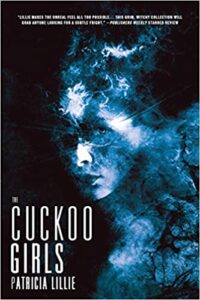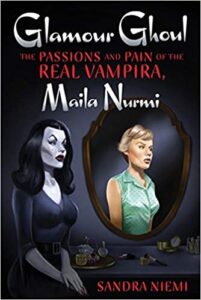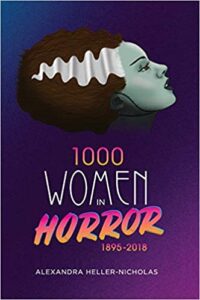The Cuckoo Girls by Patricia Lillie ( Bookshop.org | Amazon.com )
Trepidatio Publishing, 2020
ISBN-13 : 978-1950305247
Available: Paperback
The Cuckoo Girls is a collection of eighteen stories (three are “drabbles” and counted as one in the table of contents), eight of which are original to the collection, and includes “Abby”, a story narrated by the mother of an autistic teenage girl that appears to be an early version of the beginnings of Lillie’s debut novel The Ceiling Man (I wish she had mentioned this in her story notes as I was not familiar with the novel). I’m glad Lillie expanded the story as the novel apparently includes Abby’s point of view, something I felt was really missing here. In stories like “That’s What Friends Are For”, about a woman who grew up in a haunted house where she made friends with the ghosts, and “Mother Sylvia”, which is told from the point of view of the witch in Hansel and Gretel, Lillie shows the imagination to re-vision and reverse familiar schemas, so it appears that in “Abby”, she just needed more space to express that. It’s an eerie and disquieting story as it is.
Doppelgangers, twins, parasites, and children gone wrong populate Patricia Lillie’s stories, from her surreal “The Cuckoo Girls” and “In Loco Parentis”, to those, like “Mother Sylvia” and “The Robber Bridegroom” clearly based on fairy tales, and those mystical but grounded in fact, like “Notes on the Events Leading Up to the Mysterious Disappearance of Miss Lotte Clemens” , a fascinating story based on actual newspaper accounts. Other stories are brief but clever, such as “Laundry Lady” and “Three Drabbles Brought to You By the Letter E”, and there is commentary on the tragedies that can be caused by small town “togetherness” in “And One For Azazel (With Jellybeans), a Bradbury-esque tale about a little girl who is blamed for causing the colors of things in her town to change, and “Wishing You The Best Year Ever” about a family held responsible for the fate of a town’s star baseball team.
This is an enjoyable and imaginative, if uneven, collection of insightful, quiet, and disquieting, stories about women and girls trapped by circumstance, family, society, and themselves, that leaves me intrigued enough to look into Lillie’s novel. Having now seen the difference between “Abby” and the first few chapters of The Ceiling Man, I would say she’s grown significiantly as a writer and is one to watch for in the future. Recommended.
Contains: mention of suicide, mild gore, violence, dismemberment, body horror
Reviewed by Kirsten Kowalewski
Editor’s note: The Cuckoo Girls is a nominee appearing on the final ballot for this year’s Bram Stoker Award in the category of Superior Achievement in a Short Story Collection.







Follow Us!